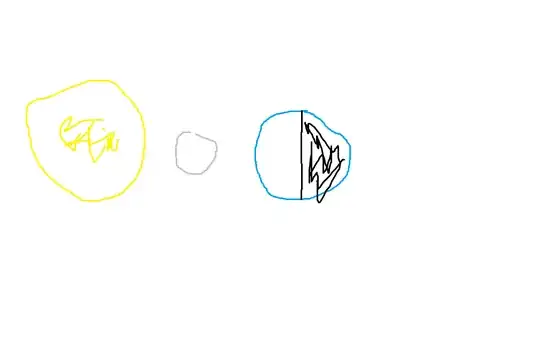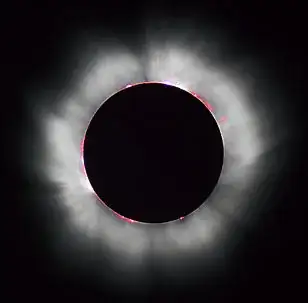A rather stupid question, why can we see the moon when it is between the Earth and the Sun?
6 Answers
The premise of this question is wrong.
If the moon is in between the earth and the sun (as shown on your diagram), and you can see the moon, then it is day, not night:
If on the other hand, you are on the opposite side of the earth during that configuration (so that it is night), then you can't see the moon because the earth is blocking your view of it:
- 664
The sun doesn't just illuminate the moon directly. The moon is also illuminated by sunlight reflected from the earth. This is called earthshine. This makes the parts of the moon that face us visible even when the sun is on the other side.

According to NASA, it was Leonardo da Vinci who first explained this.
As an example, the brightly lit portion of this photo is illuminated directly by the sun. The rest of the moon, though, is still visible and this is due to earthshine:
Image credit: Steve Jurvetson
- 8,388
- 3,025
While excellent answers have already been provided (yes, it's Earthshine; yes, when the Moon is between the Sun and the Earth, you don't see the Moon at night, you see it from the daylit side of the Earth) given all the "artist's renderings" in the question and the answers, I thought it might be useful to include a diagram that demonstrates the actual scale of the Earth-Moon system:
This is it. That's how small the Earth (right) and (especially) the Moon (left) are compared to the distance between them.
I did not include the Sun in this diagram. I couldn't. Its diameter would be nearly four times the Earth-Moon distance. And it would be nearly 400 times as distant from the Earth as the Moon:
Not sure how visible the single pixel on the right is, but that single pixel is the Earth-Moon system, shown to scale compared to the little circle on the left representing the Sun, with the distance between the two also at the proper scale.
This scale of things might explain, among other things, why solar eclipses (when the Moon is truly between the Earth and the Sun) are relatively rare.
- 1,893
If it is really between the earth and the sun it is called a "solar eclipse" and and the moon's shadow falls on the earth at certain places, because it is not large enough to cover the whole sun except on a shadow path.
A total solar eclipse occurs when the Moon completely covers the Sun's disk, as seen in this 1999 solar eclipse. Solar prominences can be seen along the limb (in red) as well as extensive coronal filaments.
One must not look at the moon during the eclipse with naked eyes because of the danger even from the corona of destroying the retina. The intensity is strong enough not to allow for shadows on the moon surface, as seen above.
By contrast, a
total lunar eclipse has the direct sunlight completely blocked by the earth's shadow. The only light seen is refracted through the earth's shadow. This light looks red for the same reason that the sunset looks red, due to rayleigh scattering of the more blue light. Because of its reddish color, a total lunar eclipse is sometimes called a blood moon.
That this does not happen every lunar month ( thanks BenHillier) is because the orbit of the moon around the earth is slanted .
Lunar orbit inclination also determines eclipses; shadows cross when nodes coincide with full and new moon, when the Sun, Earth, and Moon align in three dimensions.
- 236,935
The diagram you drew is flat, but the solar system is not. The Moon's orbit is not in the same plane as the Earth's orbit. Wikipedia has a nice diagram:
Because of this, when the Moon is "in between" the Earth and the Sun, it is usually a little "above" or "below" the Sun as well. You can observe this for yourself: one or two days after the new moon, look for the Moon in the sky at sunset. It will be above the Sun, and the bright arc will point toward the Sun. But it will also be a little off to one side or the other. That angle is a combination of the Moon's orbital angle with the ecliptic and the Earth's axial tilt.
(They do sometimes line up perfectly, and then we have a solar eclipse, as mentioned in other answers.)
- 1,857
The moon circles around the earth, so half the time it is between the earth and the sun and half the time the earth is between the sun and the moon.
Therefore also the moon rises and sets, the same way the sun rises and sets.
If it's midnight (your are on the opposite site of the earth than the sun) and the moon is betweem the sun and the earth you can't see it. You can see a half-moon in the late evening or early morning, tough.
- 111







